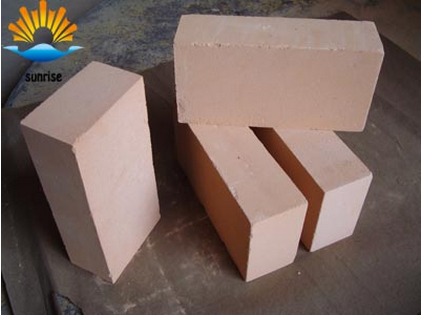Product Search
Quickly find the product you need
Products List
Refractory Knowledge
- The Use of Mullite Insulation Bricks
- Aggregates Used For the Production of Ins
- the development of the refractory brick i
- Refractory material production process
- Pollution and treatment in the production
- Production Process Methods of Refractory
- Classification of mullite insulation bric
- Pros and cons of lightweight mullite bric
- Manufacturing process of fire clay insula
- Thermal Shock Resistant Fireproof Heat In
Products List
- Phone:0086-370-63838939
- Email:sales@sunriserefr.com
- Office Address: No.36 Fengchan Road Of Zhengzhou, Henan, China (Mainland)
Physical Properties of Refractory Brick
Date:2017-03-15 17:17 | From:Zhengzhou Sunrise Refractory | Author:admin
Structural nature
The macrostructure of fire clay insulation brick is a nonhomogeneous body composed of solid and gaseous pores. Stomata is an important factor affecting the performance of products at room temperature and high temperature, especially in high temperature conditions, making the product of the external erosion resistance greatly reduced. The reason of stomatal formation is: leaving space after material moisture removed, raw material calcination is not sufficient, and some decomposition of the salt is completely decomposed, should be burning ingredients for complete burning, composition is not uniform, shrinkage is not uniform when high temperature firing and so on.

But in some light insulation products production, people also introduced a number of more distribution uniform stomata. The presence of stomata directly affects the porosity, water absorption, bulk density, air permeability of refractory material and other indicators.
1. Porosity
The pores in the refractory material can be divided into: closed pore, closed in the product does not communicate with the outside. Open pore, one end closed, the other end connected with the outside, can be filled with fluid. Through pore, through the two sides of the product, can pass through the fluid.
2. Water absorption
The water absorption is the ratio of the mass of water absorbed by the entire opening of the product to the mass of the dried sample. Because the water absorption test method is simple, it is often used in the production practice to identify the raw material calcination quality. The better is the calcined material, the lower is the water absorption value.
3. Bulk density
The definition of bulk density is the ratio of the dry weight of the product to the total volume, also known as the volume weight. The bulk density intuitively reflects the degree of density, which is an important measure of the quality of the refractory material. However, in the production of lightweight insulation products, in order to reduce the heat capacity and thermal conductivity, people also use various means to reduce the bulk density of products.
The macrostructure of fire clay insulation brick is a nonhomogeneous body composed of solid and gaseous pores. Stomata is an important factor affecting the performance of products at room temperature and high temperature, especially in high temperature conditions, making the product of the external erosion resistance greatly reduced. The reason of stomatal formation is: leaving space after material moisture removed, raw material calcination is not sufficient, and some decomposition of the salt is completely decomposed, should be burning ingredients for complete burning, composition is not uniform, shrinkage is not uniform when high temperature firing and so on.

But in some light insulation products production, people also introduced a number of more distribution uniform stomata. The presence of stomata directly affects the porosity, water absorption, bulk density, air permeability of refractory material and other indicators.
1. Porosity
The pores in the refractory material can be divided into: closed pore, closed in the product does not communicate with the outside. Open pore, one end closed, the other end connected with the outside, can be filled with fluid. Through pore, through the two sides of the product, can pass through the fluid.
2. Water absorption
The water absorption is the ratio of the mass of water absorbed by the entire opening of the product to the mass of the dried sample. Because the water absorption test method is simple, it is often used in the production practice to identify the raw material calcination quality. The better is the calcined material, the lower is the water absorption value.
3. Bulk density
The definition of bulk density is the ratio of the dry weight of the product to the total volume, also known as the volume weight. The bulk density intuitively reflects the degree of density, which is an important measure of the quality of the refractory material. However, in the production of lightweight insulation products, in order to reduce the heat capacity and thermal conductivity, people also use various means to reduce the bulk density of products.

